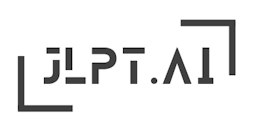

N2
音読み:bai
訓読み:kai
バイbai
かいkai
Shell, money, wealth
Imagine a shell with its curved shape and beautiful patterns. This shell represents wealth and prosperity, as it was once considered a valuable currency.
The kanji '貝' is considered a medium-level character and may appear in JLPT N2 exam materials. Understanding its readings and meanings is essential for vocabulary and reading comprehension sections of the test.
海でたくさんの貝を拾いました。
I picked up many shells at the beach.
うみでたくさんのかいをひろいました。
umi de takusan no kai o hiroimashita.
彼は貝を集めて趣味にしています。
He collects shells as a hobby.
かれはかいをあつめてしゅみにしています。
kare wa kai o atsumete shumi ni shiteimasu.
そのお店は高級な貝料理が有名です。
That restaurant is famous for its high-end shellfish dishes.
そのおみせはこうきゅうなかいりょうりがゆうめいです。
sono omise wa koukyuu na kairyouri ga yuumei desu.